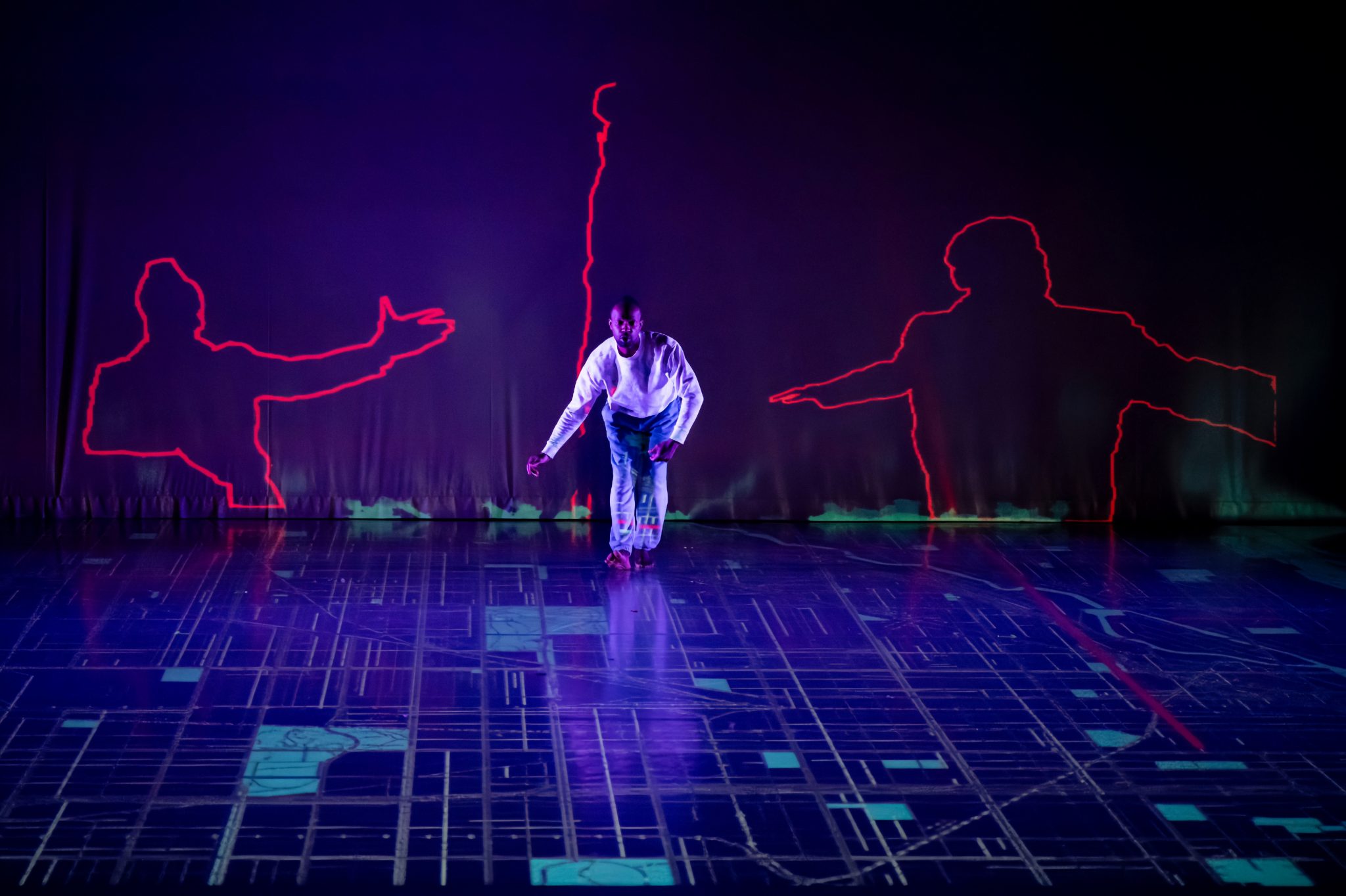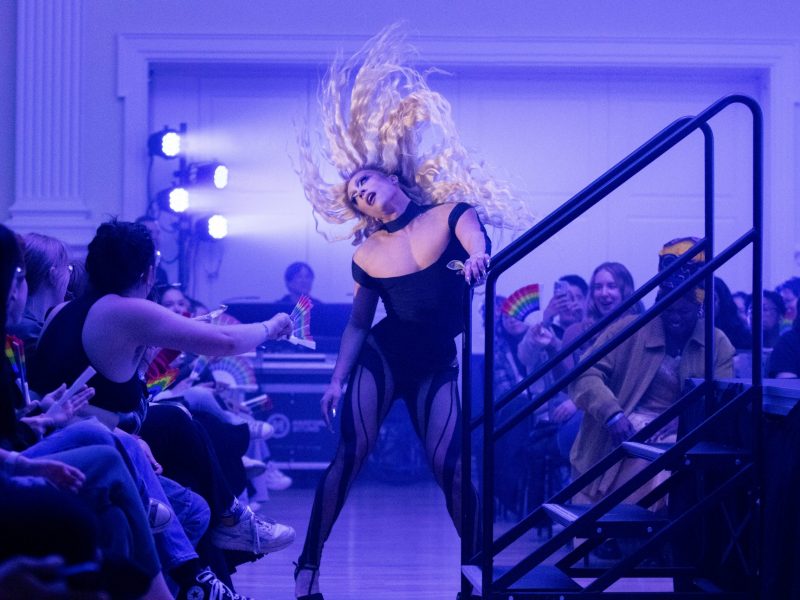As interdisciplinary artist André Zachery began to dance, red lines formed on a screen, revealing the outlines of three Black men who tragically died in Chicago.
Set to the audio of a poem by Gwendolyn Brooks about the death of a young Black boy, Zachery attempts to fit his body — a computer graphic version on the screen that follows his movements — into the mold of the men.
This performance — presented by the University of Maryland’s theatre, dance and performance studies school, immersive media design program and Arts for All — was the genesis of a high-tech journey Zachery took his audience on during his solo performance at The Clarice Smith Performing Arts Center Dance Theatre Saturday.
Zachery performed an excerpt titled “SALT: Work-in-Progress,” a reflection on his coming of age in the ’80s and ’90s as a Black man and Chicago native.
[Student band Baltimore Avenue talks debut concert, connecting through music]
“What do you do with the weight of those histories and how do you live with them, but at the same time how do you move forward?” Zachery, who is also an assistant arts professor at New York University, said.
Zachery answered this question by confronting the past, present and future.
In one segment, he began pulling and working through an invisible string as red clustered strings on a map of Chicago appeared behind him. Here, the performance alluded to and resisted the racial segregation of redlining in Chicago.
The image on the screen transitioned to blue swirls that mimicked water currents. Zachery’s body slowed before he began flapping and flailing his arms like wings. A reading of Salt, a book by Earl Lovelace that explores neo-colonial independence in Trinidad and Tobago, resounded through the theater as Zachery’s movements responded to the text.
Zachery also wove African mythology and the legend of flying Africans into his piece because he grew up listening to these stories. It was important to include this aspect in his performance because myth and magic are rooted in Black and African culture, which inspires his artistic medium, he said.
“Magic is important,” Zachery said. “It’s through these artistic statements that you’re able to actually use that magic to dream, create and ultimately inspire in some way.”
A soundscape of ocean waves filled the theater, with swirls on the screen moving in accordance with Zachery’s body. He said the displayed images were programmed and altered by the level of sound and the position of his body.
He used this water scene to educate the audience about the origin of flying Africans, which stem from the captivity of enslaved Igbo people from Nigeria.
[‘The Fall Guy’ hits its mark in SEE advance screening]
After sailing across the Atlantic Ocean and resisting the entire way, the Igbo jumped into the sea at Igbo Landing and flew back to Igbo land through the water, Zachery said.
This portion of the performance enthralled Jonathan David Martin, a lecturer in the immersive media design program and the host of Zachery’s performance.
“It made me feel like he was conjuring spirits almost through the technology,” Martin said. “We forget that [technology] can be in service of creating a really unique emotional response.”
Kate Ladenheim, an artist in residence at this university and a host of the symposium said Zachery’s performance moved her. She applauded his ability to use technology to revive his ancestors’ lost stories and persevere in the face of his ancestors’ struggles.
Zachery seamlessly segued into hip hop dancing, performing backflips and engaging in fast paced movements as “Started From the Bottom” by Drake played in the background. He recontextualized the song to speak about how Africans came from the bottom of the ocean and paved the way for who he is as a Black man today, he said.
“We started from the bottom and now we’re here,” Zachery said. “We flying now. Cool. We up there.”



